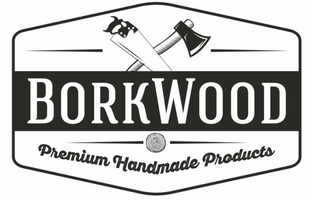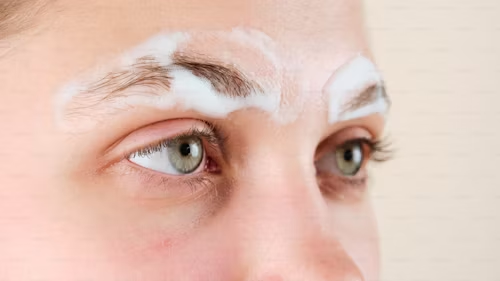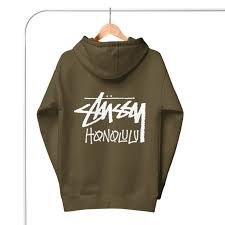Why Some Leather Shirts Cost $50 and Others $500?
Leather shirts have gained attention in both casual and fashion circles. Their unique appearance and rich texture make them stand out. But a question often arises: Why is one leather shirt priced at just $50 while another demands $500 or even more? The answer lies in the finer details. This article explores all the reasons behind the price gap so you can make an informed decision before buying.
Type of Leather
Leather comes from animal hides, but not all leather is the same. The layer of hide used, the treatment process, and the cut all affect the price.
Genuine Leather
Genuine leather is often the least expensive form of real leather. It is created by using the layers beneath the top layer of the animal hide. These layers are pressed and glued together, then coated to give them a smooth surface. While genuine leather can be marketed as real leather, its performance is lower compared to other types. It may feel hard or overly stiff and does not breathe well. Over time, it is more likely to crack, fade, and show wear. Manufacturers often use it for budget-friendly leather shirts that prioritize price over longevity.
In lower-cost products, genuine leather is also mixed with synthetic materials. These blends reduce costs even more but further lower the quality. It may look fine at first but will quickly reveal flaws with regular wear.
Full Grain Leather
Full grain leather is considered the best leather available. It comes from the outermost layer of the hide and includes all the natural grain. This means it has not been sanded, buffed, or corrected to remove imperfections. These natural marks give the leather its character.
This leather type is very strong and durable. It can last for decades with proper care. It also ages well, forming a rich surface texture over time that reflects your personal use. Because of its strength, beauty, and rarity, it is used in high-end leather shirts. The processing is slow and careful, and waste is kept to a minimum. Full grain leather requires skilled cutting to avoid scars or weak areas. All of this adds to the cost, but the result is a shirt that can last many years.
Top Grain Leather
Top grain leather is a step below full grain. It is taken from the top part of the hide but sanded and treated to remove marks. The result is a smooth, clean surface. It is more flexible than full grain and easier to work with, which makes it a popular choice for mid-range shirts.
While top grain does not age as gracefully as full grain, it still offers good durability and comfort. It can handle regular use and looks stylish. The cost is lower than full grain, but it still reflects decent quality.
Split Leather and Bonded Leather
Some cheap shirts use split leather, made from the lower layers of the hide. It is much weaker than the upper layers and often lacks the surface grain. Bonded leather, even lower in quality, is made by gluing leather scraps together and coating them with a synthetic layer. These types may cost the least, but they offer poor performance and short life.
Source of Leather
Where the leather comes from makes a big difference in quality and price. Leather from different parts of the world varies in how the animals are raised, how the hides are collected, and how they are treated.
Leather from Italy, France, and some parts of South America is known for its quality. In these areas, animals are raised in good conditions. They are less likely to have scars, bug bites, or skin diseases. The hides are carefully collected and processed using cleaner methods. The tanning facilities follow strict rules, and the staff is trained to handle hides with care.
This results in leather that is soft, flexible, and rich in texture. It also smells clean and natural. Shirts made from such leather often cost more, not just because of the better hide but also the extra steps in preparation.
In contrast, leather from poorly managed sources may come from stressed animals. These hides may be damaged or poorly cleaned. To cover flaws, manufacturers may use heavy coatings and chemical treatments. While these hides are cheaper, they reduce the quality of the final product.
Tanning Process
Tanning is how raw hides are turned into usable leather. It affects how the leather looks, feels, and performs. There are two major tanning methods: vegetable tanning and chrome tanning.
Vegetable Tanning
Vegetable tanning is one of the oldest and most natural ways to treat leather. It uses tannins found in plants, tree bark, leaves, and fruit. This process takes several weeks and requires constant monitoring. The result is thick, strong leather with a firm feel.
Vegetable-tanned leather is more expensive because of the time and skill needed. It is known for its ability to age well and form a patina. The leather becomes more beautiful with use. It also has a pleasant natural scent.
This type of tanning is used in luxury leather shirts where quality and appearance matter most. It is safe for the skin and better for the environment.
Chrome Tanning
Chrome tanning uses chromium salts and other chemicals. It is much faster, often completed in 1 to 3 days. The leather feels softer and more flexible right away. It is easier to dye and offers bright colors.
However, chrome-tanned leather may not last as long. It can dry out or fade with age. The chemicals used can also cause skin reactions or odors if not properly removed.
Because it is fast and less costly, chrome tanning is common in mass production. Most low to mid-priced leather shirts use chrome-tanned hides.
Thickness and Weight
The thickness of the leather affects both the look and the function of the shirt. Thicker leather is harder to sew and cut. It requires more care during the crafting process. It also costs more to ship due to its weight.
Thick leather shirts are more durable. They resist tearing and maintain shape over time. These shirts offer a firmer structure and tend to look more formal or stylish.
Thin leather shirts are easier to make. They drape more like fabric and feel lighter on the body. They are often used for fashion pieces meant for short-term use. While thin leather is cheaper, it may stretch, crack, or wear out faster.
Some premium shirts balance thickness and softness by using full grain leather that has been conditioned and treated gently. This makes the shirt firm but comfortable.
Crafting Quality
The way a leather shirt is made says a lot about its price and value.
Handcrafted Shirts
Handcrafted shirts involve careful steps. Skilled workers inspect the hide, cut it by hand, and match leather panels by texture and shade. Each stitch is placed with care. They use strong threads and firm seams to ensure long-term use.
This level of detail is slow and labor-intensive. But it results in a shirt that fits better, lasts longer, and looks more refined. The inside seams are smoother. The fit is more natural. Everything feels well put together.
Machine-Made Shirts
Mass-produced shirts are made using machines. These cut the leather, sew the pieces, and finish the product quickly. This method allows for large numbers of shirts at a low cost. But the fit, feel, and finish can vary.
Seams may be uneven. The cut may not follow the natural grain. Small mistakes often go unnoticed in fast production. While machine-made shirts cost less, they may not perform as well over time.
Fit and Design
The design of a leather shirt affects how it looks, feels, and functions. Simple shirts with straight lines and basic buttons are easier to make. They use less material and need fewer work hours.
More advanced designs, such as fitted cuts, double-stitched seams, flap pockets, and custom collars, take more time and skill. They require precision in cutting and sewing. Some shirts even use curved or shaped panels to follow the natural lines of the body.
Custom design elements like decorative stitching, contrast trim, or embossed patterns also raise the price. Each detail adds time to the process and uses more material. That cost is passed to the buyer.
Brand Name
Brands spend years building trust. A known brand often stands for better design, reliable support, and consistent quality. To maintain this image, they choose better leather, follow strict checks, and hire skilled workers.
Designers, small retailers and heritage brands like leather shirts mens from ZippiLeather take a longer view. They build a shirt not just to sell-but to be worn. They test fabrics. They tweak cuts. They source from trusted tanneries. They know how it’s made matters as much as how it looks.
This reputation adds to the cost. You are not only paying for the shirt but also for the peace of mind that comes with buying from a trusted source.
Cheaper brands may not have the same controls. They may change suppliers often or use mixed materials. These shirts may look similar but offer less value over time.
Lining and Hardware
The inside of the shirt affects comfort. A good lining allows the leather to breathe. It reduces friction and keeps you comfortable even if worn for long hours. High-quality linings use soft, strong materials that stay in place and resist tearing.
Hardware matters too. Buttons, snaps, or zippers should be made from durable metal. They should feel smooth to use and stay in place after many uses. Cheap hardware may rust, break, or fall off. Replacing it can be hard and may damage the shirt.
Expensive shirts use tested, long-lasting parts. These hold up with daily use and add to the shirt’s overall quality.
Environmental Impact
The way leather shirts are made can either help or hurt the environment. High-end leather shirts are often made using cleaner methods. They use vegetable tanning, follow waste rules, and make sure workers are treated well. These shirts are made to last, so they are less likely to be thrown away soon.
Cheaper shirts may come from tanneries that use harsh chemicals and release waste into water or soil. These shirts may also wear out fast, which adds to landfill waste. While budget options can be tempting, they often leave a larger footprint.
Choosing a shirt made in eco-conscious ways may cost more upfront, but it helps the planet in the long run. It also shows a commitment to responsible buying.
Ethical Practices
Ethics in leather production is becoming more important. Buyers are asking questions like: Were the animals treated humanely? Were workers paid fairly? Were safe methods used?
Brands that follow ethical practices often charge more. They may get hides as by-products from the food industry, treat workers well, and avoid toxic processes. These steps raise costs but offer peace of mind to the buyer.
Low-cost shirts may not meet these standards. Some may be made in factories with poor working conditions. Others may use leather from unknown sources where animal welfare is not a concern.
Being aware of these issues helps you make better choices. Paying more often means supporting fairer and safer systems.
Customization Options
Some brands let you customize your leather shirt. You can choose the color, fit, buttons, and even add initials. These shirts are made one at a time, just for you. This level of detail costs more because it requires time, effort, and skill.
Customized shirts also need better planning and material use. Mistakes must be avoided, so extra care goes into cutting and sewing. The result is a shirt that feels like it was made for you.
Mass-market shirts follow set patterns and sizes. They are faster to make but may not fit as well or suit your style.
Supply Chain and Shipping Costs
Where the shirt is made and where it is shipped from can affect the price. Shirts made locally may cost more to produce but save on shipping. Shirts made overseas may be cheaper to make but come with added costs like import duties, long transport, and delays.
Some brands use a short supply chain. They get their leather, make the shirt, and sell it directly to you. This can keep costs fair. Other brands have many steps-suppliers, factories, warehouses, stores-and each step adds to the price.
Knowing the supply chain helps you see why some shirts are priced the way they are. A well-managed chain often means better value.
Marketing and Packaging
The way a shirt is sold can also affect the cost. High-end shirts come in premium packaging. They may include dust bags, wooden hangers, or branded boxes. These extras add to the experience but also to the price.
Big brands also spend money on ads, models, and store displays. This builds image and trust but adds to costs.
Budget shirts may come in simple plastic wrap and rely on online photos. They skip the frills to keep prices low. It is up to you to decide what kind of experience you want.
Frequently Asked Questions
Q1: Is a $50 leather shirt real leather?
A: It might be, but it is likely made of bonded or genuine leather with synthetic mixes. It may not last long or feel as comfortable.
Q2: Why does full grain leather cost more?
A: It is the top layer of the hide, strong, full of character, and hard to work with. It ages well and lasts many years, making it more valuable.
Q3: Can I get a good leather shirt for under $200?
A: Yes, look for top grain leather and brands that keep costs low by selling directly. Check for honest descriptions and good reviews.
Q4: What makes a leather shirt ethical?
A: Fair labor, animal welfare, clean tanning, and supply chain transparency. Ethical brands share these details openly.
Q5: Does customization make a big difference?
A: Yes. A custom shirt fits better, shows your style, and often uses higher-quality materials. It also involves careful work, which adds to the cost.
Conclusion
The cost of a leather shirt is not just about the leather itself. It is shaped by the quality, source, process, labor, ethics, and brand behind it. A $50 shirt may use bonded leather, be machine-made, and cut corners in comfort and care. A $500 shirt often uses full grain leather, is handcrafted, and follows ethical and eco-friendly practices.
Understanding what goes into each price point helps you choose wisely. Whether you want a budget buy or a long-term piece, knowing the facts puts you in control.







